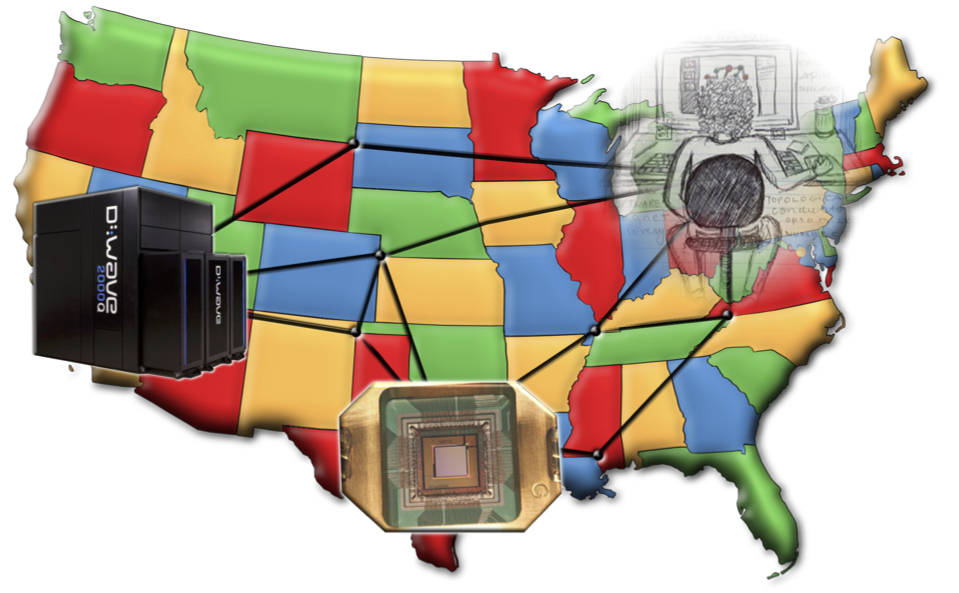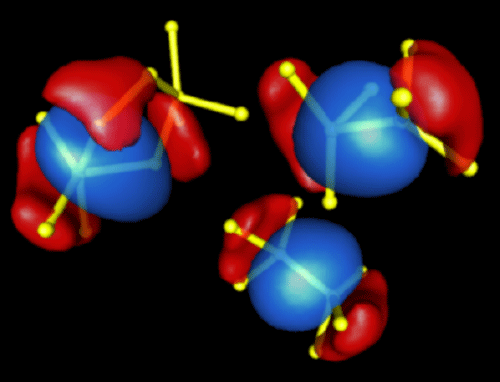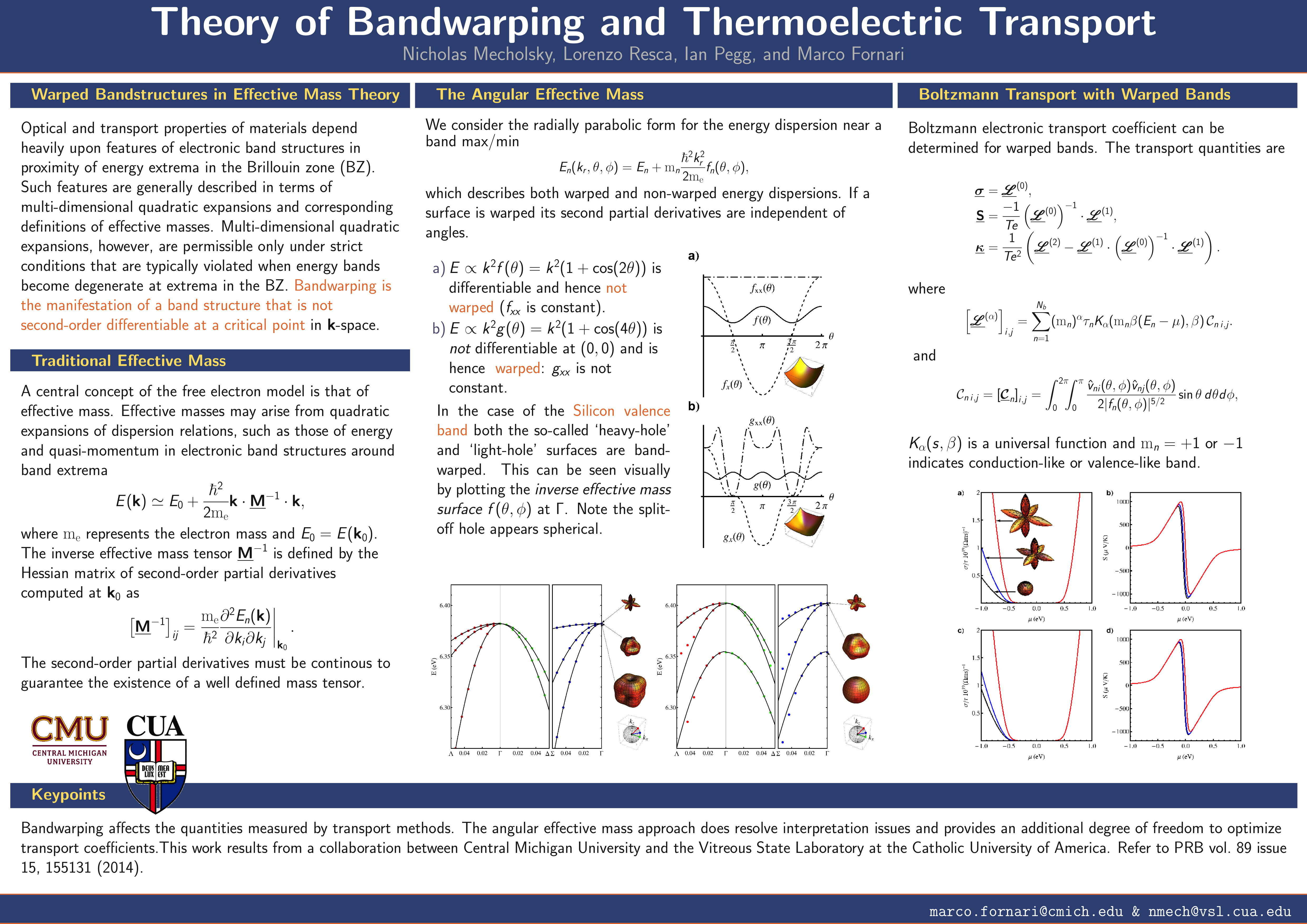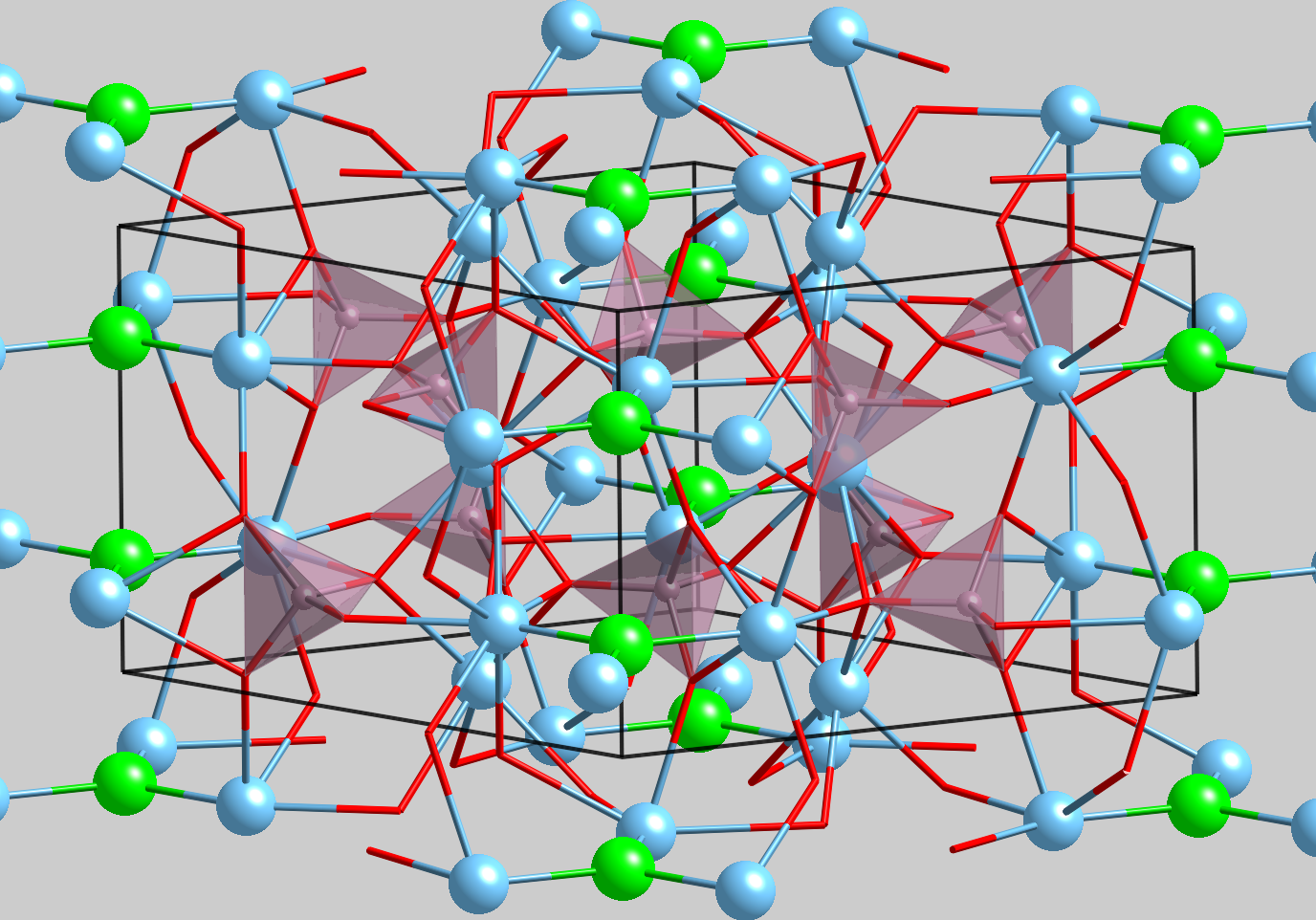Research interests
Quantum computations |
|||||
 |
|||||
Ferroelectric materials
Electronic and vibrational properties of complex oxides.
Design of novel compositions and search for Pb free
materials.
Recent work has pointed to the interplay
of the cations in PT as the origin of the tetragonal
phase. Extention of this effort lead to an high
throughput
theoretical search. Ferroelectric
materials with the tungsten bronze structure have been
also
investigated.
|
|||||
 |
|||||
Thermoelectric materials"Phonon glass -- electron crystal" bulk thermoelectrics similar to skutterudites are under investigation to explore paths to optimize the electronic and thermal properties. Our main goal is to play with the chemical composition and alloying to increase ZT in technological temperature windows for refrigeration and energy conversion. Recently, we have also studied the TE properties of layered nitrides and complex sulfides such as colusites and Cu-Sn-S systems. |
|||||
 |
|||||
 |
Amorphous semiconductorsWe focused on a-Si and a-Si:H that have significance for solar energy conversion. We both focused on the electronic structure of defects (especially floating bonds) and on the description of realistic amorphous structure. |
||||
Phenomenological models |
|||||
 |
|||||
Bio-inorganic materialsWe study apatitic materials in order to understand the effect of carbonation in Fluor-apatite and similar systems. Our goal is to complement the experimental research with theoretical spectroscopies (NMR, EPR, Raman). |
|||||
 |
|||||